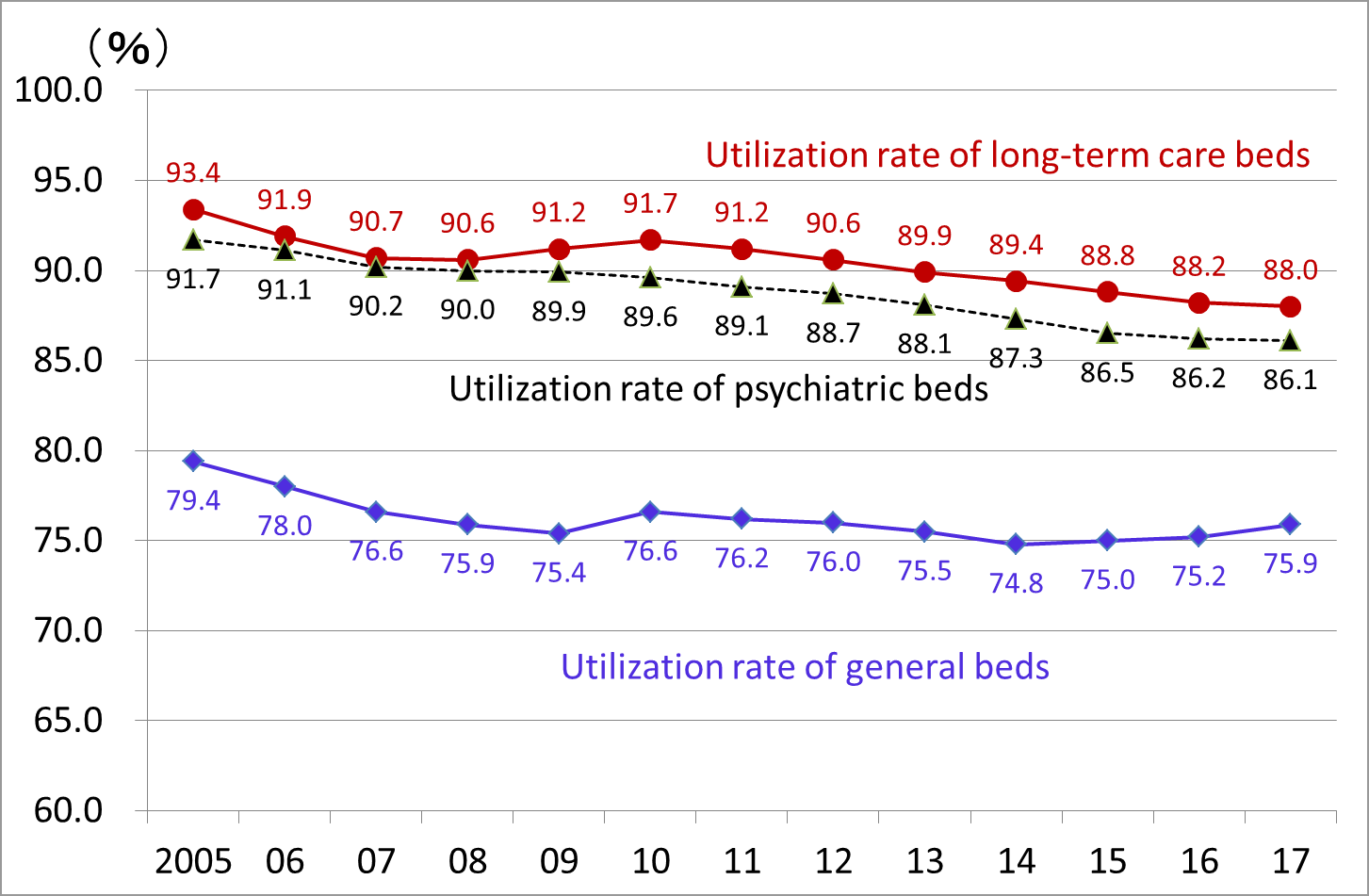Column Finance and the Social Security System 2019.01.22
【Aging, safety net and fiscal crisis in Japan】No.147: Despite the decrease in hospitals, the problem of overinvestment has not yet been resolved
In December 2018, Ministry of Health, Labour and Welfare released a survey report of medical facilities in 2017. As shown in Table 1, in Japan, whose population is 125 million (as of October 2017), the number of hospitals decreased from 9,026 in 2005 to 8,412 in 2017. During the same period, the number of general hospitals decreased by 599, but that of psychiatric hospitals, which are known to have problems with long-term hospitalization, decreased only by 14. Given that the number of hospitals in the US with a population of 326 million is 6,210 (5,470 general hospitals; 620 psychiatric hospitals; 120 prison, long-term care, and other hospitals), even at the reduced number of 8,412, it is likely that many hospitals in Japan are still redundant.
The number of general hospitals decreased by 7.5% between 2005 and 2017, but the number of general beds decreased only by 1.5% from 904,199 in 2005 to 890,865 in 2017 (Table 2). This reflects that hospital managers prioritize to acute care beds with higher medical fees per patient.
The average length of stay for general hospital beds, long-term care beds, and psychiatric hospital beds has been gradually shortened (Table 3). This is because the government has encouraged shorter stays by revising the amount of medical fee reimbursement. Hospital bed utilization rates tend to decline owing to this shortening when there are beds in excessive numbers (Figure 1).
Table 1: Change in the number of hospitals by hospital type

Source: Ministry of Health, Labour and Welfare
Table 2: Change in the number of beds by bed type

Source: Ministry of Health, Labour and Welfare
Table 3: Change in the average length of stay by bed type

Source: Ministry of Health, Labour and Welfare
Figure 1: Hospital bed utilization rate by bed type

Source: Ministry of Health, Labour and Welfare
